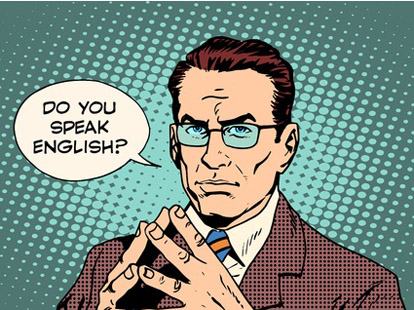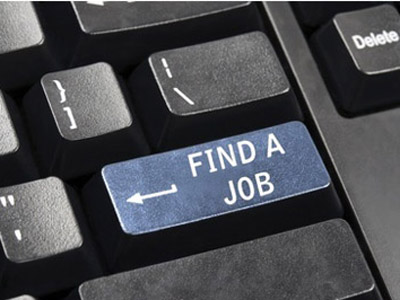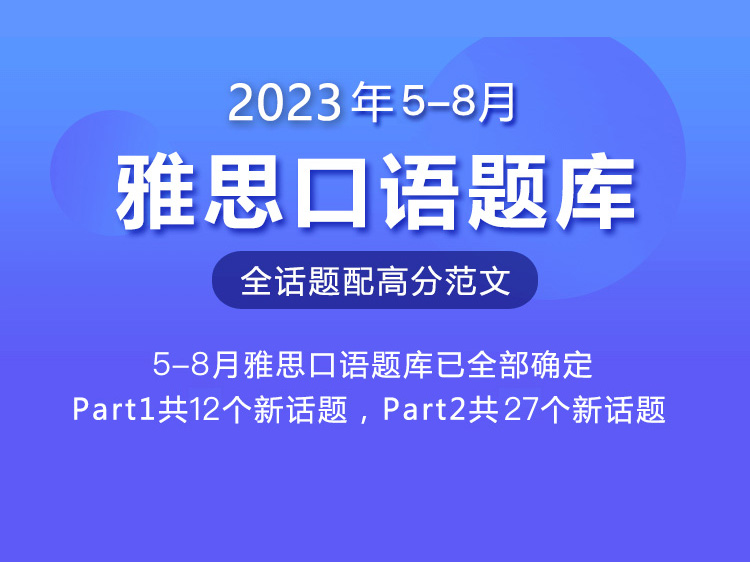【小站出品】雅思阅读机经真题解析-What Does the Consumer think?
- 2016年09月28日16:17 来源:小站教育作者:小站雅思编辑
- 参与(1) 阅读(13843)
What Does the Consumer think?
|
A |
MARKETING people are no longer prepared to take your word for it that you favour one product over another. They want to scan your brain to see which one you really prefer. Using the tools of neuroscientists, such as electroencephalogram (EEG) mapping and functional magnetic-resonance imaging (fMRI), they are trying to learn more about the mental, processes behind purchasing decisions. The resulting fusion of neuroscience and marketing is inevitably, being called 'neuromarketing'. |
|
B |
The first person to apply brain-imaging technology in this way was Gerry Zaltman of Harvard University, in the late 1990s. The idea remained in obscurity until 2001, when BrightHouse, a marketing consultancy based in Atlanta, Georgia, set up a dedicated neuromarketing arm, BrightHouse Neurostrategies Group. (BrightHouse lists Coca- Cola, Delta Airlines and Home Depot among its clients.) But the company's name may itself simply be an example of clever marketing. BrightHouse does not scan people while showing them specific products or campaign ideas, but bases its work on the results of more general fMRI-based research into consumer preferences and decision-making carried out at Emory University in Atlanta. |
|
C |
Can brain scanning really be applied to marketing? The basic principle is not that different from focus groups and other traditional forms of market research. A volunteer lies in an fMRI machine and is shown images or video clips. In place of an interview or questionnaire, the subject's response is evaluated by monitoring brain activity. fMRI provides real-time images of brain activity, in which different areas 'light up' depending on the level of blood flow. This provides clues to the subject's subconscious thought patterns. Neuroscientists know, for example, that the sense of self is associated with an area of the brain known as the medial prefrontal cortex. A flow of blood to that area while the subject is looking at a particular logo suggests that he or she identifies with that brand. |
|
D |
At first, it seemed that only companies in Europe were prepared to admit that they used neuromarketing. Two carmakers, DaimlerChrysler in Germany and Ford's European arm, ran pilot studies in 2003. But more recently, American companies have become more open about their use of neuromarketing. Lieberman Research Worldwide, a marketing firm based in Los Angeles, is collaborating with the California Institute of Technology (Caltech) to enable movie studios to market- test film trailers. More controversially, the New York Times recently reported that a political consultancy, FKF Research, has been studying the effectiveness of campaign commercials using neuromarketing techniques. |
|
E |
Whether all this is any more than a modem-day version of phrenology, the Victorian obsession with linking lumps and bumps in the skull to personality traits, is unclear. There have been no large-scale studies, so scans of a handful of subjects may not be a reliable guide to consumer behaviour in general. Of course, focus groups and surveys are flawed too: strong personalities can steer the outcomes of focus groups, and some people may be untruthful in their responses to opinion pollsters. And even honest people cannot always explain their preferences. |
|
F |
That is perhaps where neuromarketing has the most potential. When asked about cola drinks, most people claim to have a favourite brand, but cannot say why they prefer that brand's taste. An unpublished study of attitudes towards two well- known cola drinks, Brand A and Brand B, carried out last year in a college of medicine in the US found that most subjects preferred Brand B in a blind testing — fMRI scanning showed that drinking Brand B lit up a region called the ventral putamen, which is one of the brain's reward centres, far more brightly than Brand A. But when told which drink was which, most subjects said they preferred Brand A, which suggests that its stronger brand outweighs the more pleasant taste of the other drink. |
|
G |
People form many unconscious attitudes that are obviously beyond traditional methods that utilise introspection, says Steven Quartz, a neuroscientist at Caltech who is collaborating with Lieberman Research. With over 100 billion dollars spent each year on marketing in America alone, any firm that can more accurately analyse how customers respond to brands could make a fortune. |
|
H |
Consumer advocates are wary. Gary Ruskin of Commercial Alert, a lobby group, thinks existing marketing techniques are powerful enough. "Already, marketing is deeply implicated in many serious pathologies", he says. 'That is especially true of children, who are suffering from an epidemic of marketing-related diseases, including obesity and type-2 diabetes. Neuromarketing is a tool to amplify these trends.' Dr. Quartz counters that neuromarketing techniques could equally be used for benign purposes. 'There are ways to utilise these technologies to create more responsible advertising, he says. Brain- scanning could, for example, be used to determine when people are capable of making free choices, to ensure that advertising falls within those bounds. |
|
I |
Another worry is that brain-scanning is an invasion of privacy and that information on the preferences of specific individuals will be misused. But neuromarketing studies rely on small numbers of volunteer subjects, so that seems implausible. Critics also object to the use of medical equipment for frivolous rather than medical purposes. But as Tim Ambler, a neuromarketing researcher at the London Business School, says, 'A tool is a tool, and if the owner of the tool gets a decent rent for hiring it out, then that subsidises the cost of the equipment, and everybody wins.' Perhaps more brain-scanning will some day explain why some people like the idea of neuromarketing, but others do not. |
Questions 14-19
Reading Passage 2 has ten paragraphs A-J.
Choose the correct heading for Paragraphs B-G from the list of headings
below. Write the correct number (i-x) in boxes 14-19 on your answer sheet
List of Heading
i. A description of the procedure and mechanism
ii. An international research project
iii. An experiment to investigate consumer responses
iv. Marketing with an alternative name
v. A misleading name for business?
vi. A potentially profitable line of research
vii. Medical dangers of the technique
viii. Internal drawbacks to marketing tools
ix. Broadening applications
x. What is neuromarketing?
Example Paragraph A
14 Paragraph B
15 Paragraph C
16 Paragraph D
17 Paragraph E
18 Paragraph F
19 Paragraph G
Questions 20-22
Look at the following people (Questions 20-22) and the list of opinions below. Match each person with the opinion credited to him.
Write the correct letter A-Fin boxes 20-22 on your answer sheet.
20 Steven Quartz
21 Gary Ruskin
22 Tim Ambler
|
List of opinions A Neuromarketing could be used to contribute towards the cost of medical technology B Neuromarketing could use introspection as a tool in marketing research. C Neuromarketing could be a means of treating medical problems. D Neuromarketing could make an existing problem worse. E Neuromarketing could lead to the misuse of medical equipment. F Neuromarketing could be used to prevent the exploitation of consumers |
Questions 23-26
Complete the summary below using words from the passage.
Choose ONE WORD ONLY from the passage for each answer.
Write your answers in boxes 23-26 on your answer sheet.
Neuromarketing can provide valuable information on attitudes to particular 23 It may be more reliable than surveys, where people can be 24 , or focus groups, where they may be influenced by others. It also allows researchers to identify the subject's 25 thought patterns. However, some people are concerned that it could lead to problems such as an increase in disease among 26
文章题目:What Does the Consumer think ?
篇章结构
|
体裁 |
议论 |
|
题目 |
What Does the Consumer think ? |
|
结构 |
(一句话概括每段大意)
介绍一种用大脑去观察产品喜好的方法
一个B小组应用F MRI去获得信息
怎么从F MRI中获得信息去了一个例子
从之前只有小部分接受到美国大多数人都接受了
同样的他会有一些瑕疵
举例说明有的结果和人们说的不一样
neuroscientists通过精确的分析获得了很多对象
两人对科学技术的不同观点
两种不同定义日后有可能利用这种科技知道为什么会有不同的意见 |
试题分析
Question 1-。。。
题目类型:
|
题号 |
定位词 |
文中对应点 |
题目解析 |
|
14 |
V |
B段 |
B段中说BrightHouse 营销公司成立了神经学营销小组,然而该公司的名字显示它并没有扫描人的想法,仅仅是聪明营销的例子,因此选V |
|
15 |
i |
C段 |
C段描述了大脑扫描的原理和过程,所以选i |
|
16 |
ix |
D段 |
D段主要说了从起初只有欧洲的公司利用神经学营销,到现在美国的公司也开始着手,说明了神经营销的应用范围领域变广,故选择ix |
|
17 |
viii |
E段 |
E段说了市场调查方法中存在的一些缺陷,例如接受测试的人太少不足以得出正确的结果等等。因此选择viiii. |
|
18 |
iii |
F段 |
F段主要说了神经学营销的一个例子——消费者对于两种不同可乐饮料的反馈。 所以选iii. |
|
19 |
vi |
G段 |
G段说人们对于产品的态度很多都是无意识的。如果能够准确地分析出消费者是如何选择商品的,这将会带来巨大的利益。因此选vi. |
|
20 |
f |
G段 |
People form many unconscious attitudes that are obviously beyond traditional methods that utilise introspection,says Steven Quartz, a neuroscientist at Caltech who is collaborating with Lieberman Research. |
|
21 |
d |
H段 |
Consumer advocates are wary. Gary Ruskin of Commercial Alert, a lobby group, thinks existing marketing techniques are powerful enough. |
|
22 |
a |
I段 |
But as Tim Ambler, a neuromarketing researcher at the London Business School, says, 'A tool is a tool, and if the owner of the tool gets a decent rent for hiring it out, then that subsidises the cost of the equipment, and everybody wins |
|
23 |
brands/logo |
C段 |
A flow of blood to that area while the subject is looking at a particular logo suggests that he or she identifies with that brand. |
|
24 |
Untruthful |
A段 |
They want to scan your brain to see which one you really prefer. |
|
25 |
Unconcious /subconscious |
C段 |
This provides dues to the subject’s subconscious thought patterns. |
|
26 |
Children |
H段 |
'Already, marketing is deeply implicated in many serious pathologies", he says. 'That is especially true of children, who are suffering from an epidemic of marketing-related diseases, including obesity and type-2 diabetes. |
参考译文:
消费者在想什么
|
A |
当你说,喜欢一个产品胜过另一个,营销人不再愿意相信你的话,他们想扫描你的大脑来看看你更喜欢哪个(产品)。神经科学家开始使用此类工具,如脑电图(EEG映射和功能性核磁共振成像(fMRI);他们正试图了解更多关于购买决定背后的心理过程。这样,祌经科学和营销的融合是不可避免的,被称为“神经学营销”。
|
|
B |
在这个领域第一个应用脑成像技术的是哈佛大学的格里Zaltman(1990年代后期)。这种想法曾经一直默默无闻,直到2001年,坐落在乔治亚州的亚特兰大BrightHouse营销咨询公司成立了一个专门的神经学营销的部门。(BrightHouse在他的客户中选择了可口可乐,三角洲航空公司和家得宝研究。)但从该公司的名字(BrightHouse Neurostrategies集团)看,它可能本身仅仅是聪明营销一个例子。当给人们特定的产品或活动的时候,BrightHouse的研究没有去扫描人的想法,而仅仅(借用或)建立在亚特兰大埃默里大学进行的基于功能核磁共振成像研究消费者的偏好和决策的一般结果。
|
|
C |
大脑扫描能真正被应用到营销?其实基本原理和其他传统市场研究的焦点和形式并无区别。一个志愿者躺在功能磁共振机和机器显示图像或视频剪辑。不过通过监测评估主体大脑活动的反应来代替一个采访或问卷。功能磁共振成像的大脑活动提供了实时图像,不同地区“点亮“取决于血液水平的流动。这提供了主体侧的潜意识思维模式的线索。神经科学家知道,例如,自我感知的是与大脑称为内侧前前额皮层的区域相关。流向该区域的血液,是測试对象他或她认同这个品牌的一个特定的信号标志。
|
|
D |
起初,似乎只有欧洲的公司准备承认他们使用神经学营销。两家汽车制造商,德国戴姆勒克莱斯勒和福特的欧洲的子机构,于2003年开始试点研究。但最近,美国公司对于他们使用神经营销学已经变得更加开放。利伯曼的研究(一个总部位于洛杉矶,与加州理工学院合作的营销公司)在世界范围内进行电影制片市场研究——他们测试电影预告片。更有争议的是,《纽约时报》最近报道,政治咨询公司FKF,已经研究竞选广告中使用神经学营销技术的有效性。
|
|
E |
是否所有这些超出现代版的颅相学-关于维多利亚的痴迷点和头骨个性疙瘩的链接块特征的-的范畴尚不淸楚。因为没有大规模的研究,所以扫描少数受试者可能不是一个消费者行为可靠的一般性指导。当然,焦点小组和问卷调查也存在缺陷:个性强烈的人可以引导关注群体全体的结果;存些民意调查专家们关注群体的反应也可能是不真实的。甚至是诚实的人也不能总是说清楚他们的偏好。
|
|
F |
这也许是在祌经学营销就最有潜力的领域。当被问及可乐碳酸饮料品牌时,大多数人声称有一个最喜欢的品牌,但不能说出他们为什么喜欢这个品牌。去年,在美国一个医学院进行的关于两个著名的可乐饮料(品牌A和品牌B)消费者态度未发表的研究发现:在盲品测试fMRI扫描时,按照扫描结果,大多数调查对象首选品牌应该是B,饮用品牌B在消费者脑部叫做腹侧核的区域(这是大脑的“奖赏中心”)比品牌A更明亮。但是当告诉这些饮料是哪个,大多数的实验对象说他们更喜欢品牌A,这表明其强大的品牌效应甚至大于其他饮料实际更加愉快的味道。
|
|
G |
利伯曼研究的合作者,加州理工学院的神经学家Steven Quartz说:人们的态度是来源许多意识的情形,这显然是超出传统的利用内省的方法。仅在美国在营销的花费超过每年一千亿美元,任何可以更准确地分析客户如何选择品牌的公司都可能会发财。
|
|
H |
消费者保护团体则持谨慎态度。一个游说团体Gary Ruskin of Commercial Alert认为,“现有的营销技术是足够强大,消费者已经深陷其中产生很多流行的病理症状。市场营销中的孩子尤其如此,受害的孩子已产生相关疾病,包括肥胖和2型糖尿病。而神经营销学正是放大这些趋势的一个工具。”但是神经营销学Quartz博士反驳说,技术同样可以用于良性的目的。“人们有办法利用这些技术来创建更负责任的广告,例如大脑-扫描可以被用于划定广告的界限来确保人们能够做出自由选择”。
|
|
I |
另一个担心是,大脑扫描是一种侵犯隐私行为,这些特定个人的喜好信息会被滥用。但神经营销学的研究依赖于少量的志愿受试者,所以,这似乎有些令人难以有可行性。批评家们也反对医疗设备用于非医学目的“琐碎轻佻的”研究。但伦敦商学院的神经营销学研究员Tim Ambler说,“工具仅是工具,如果(医疗)工具的主人出租这工具取得不错的租金,用于资助的设备的费用,那么人人都是赢家。他还调侃,“也许有一天(医疗)设备对更多的大脑扫描还能解释为什么有些人喜欢神经营销学这个主意,但其他人却不喜欢。”
|
参考答案:
|
Version 17101 主题 消费者的思维 |
|||||
|
14 |
v |
15 |
i |
16 |
ix |
|
17 |
viii |
18 |
iii |
19 |
vi |
|
20 |
F |
21 |
D |
22 |
A |
|
23 |
brand(s)/logo |
24 |
untruthful |
25 |
unconscious/ subconscious |
|
26 |
children |
||||










































